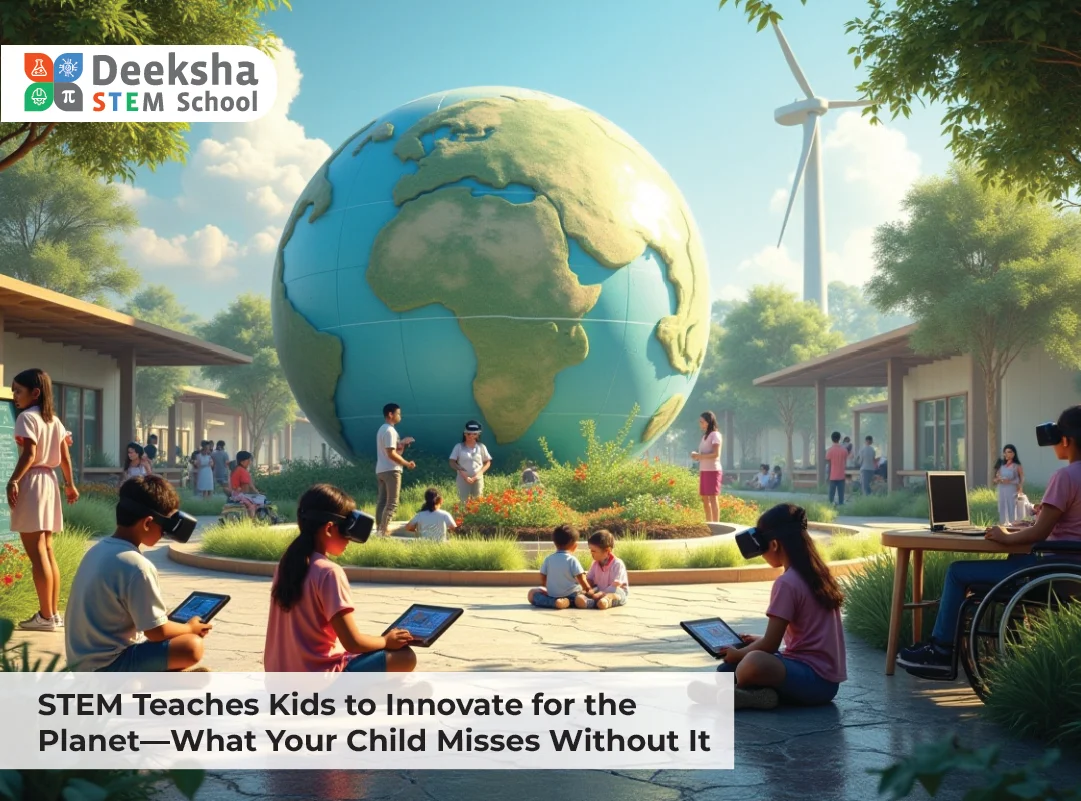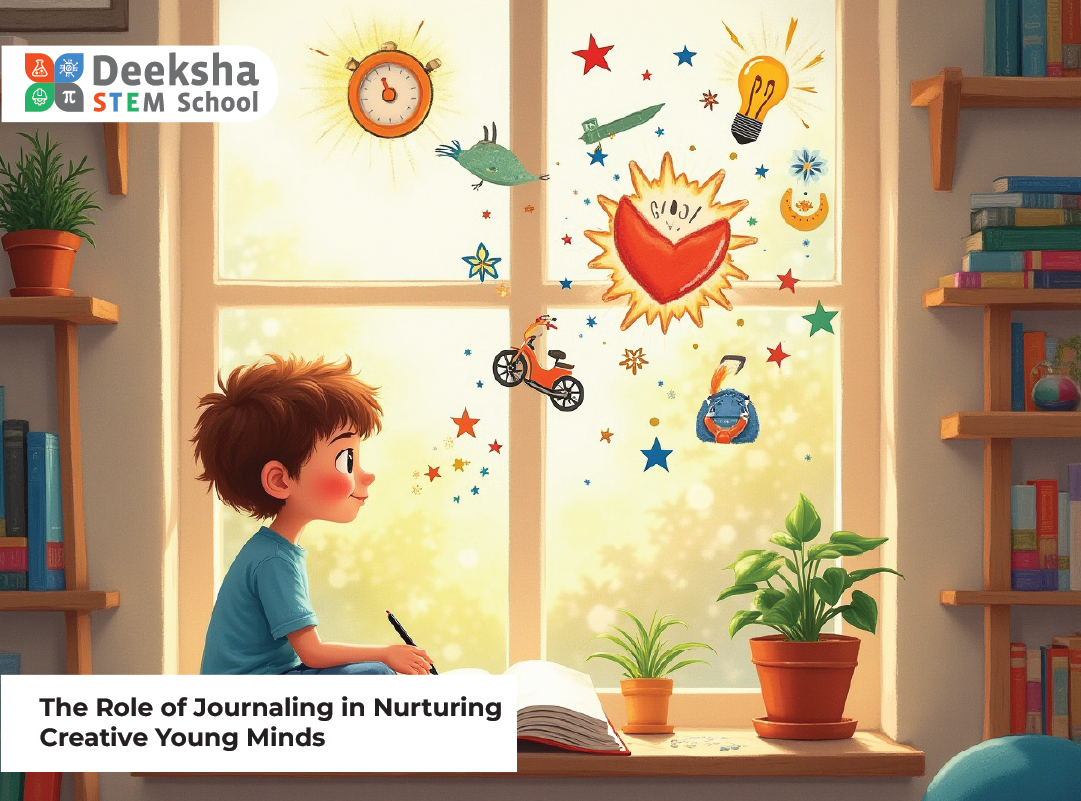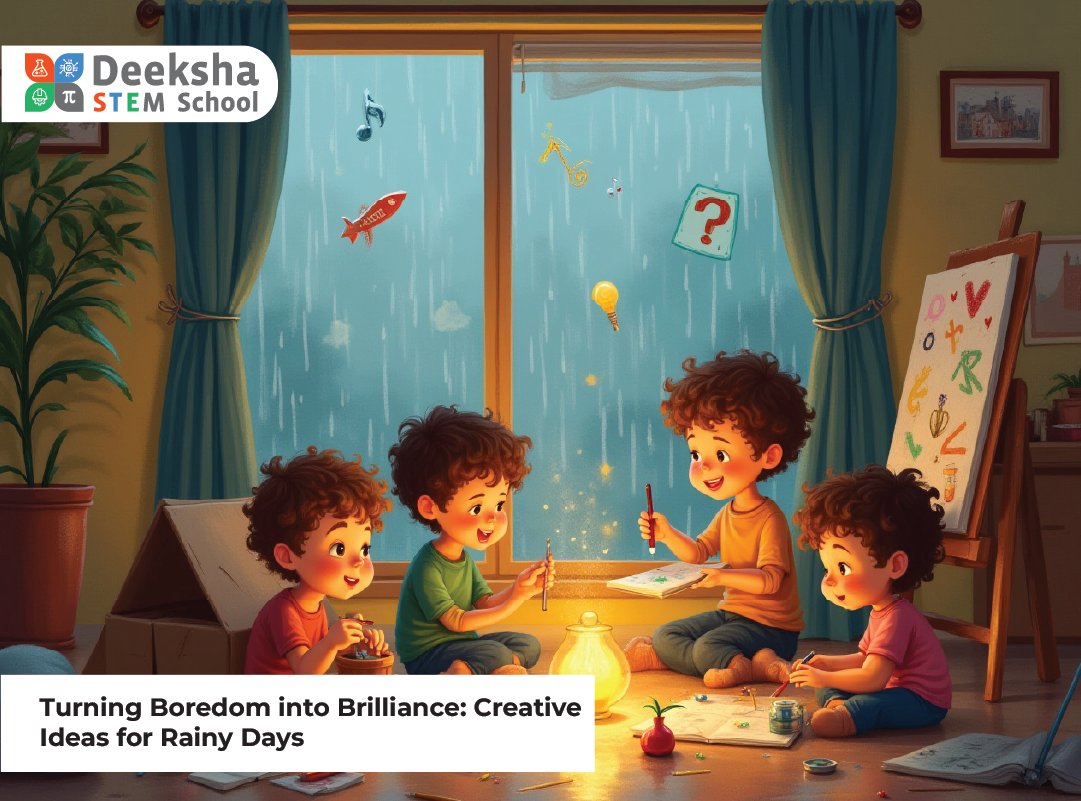How Technology and Arts Together Shape a Child’s Brain Development

Introduction
In the rapidly evolving world of the 21st century, it’s crucial to understand how different educational approaches can shape a child’s development. Two areas that stand out in promoting cognitive, emotional, and creative growth are technology and the arts. While both fields are often viewed as distinct, their combined influence can significantly enhance a child’s brain development, preparing them for a future that demands creativity, innovation, and adaptability.
In this blog, we will explore how the integration of technology and arts positively impacts a child’s brain development, fostering creativity, critical thinking, emotional intelligence, and problem-solving skills. These skills are essential for navigating both academic and real-world challenges.
The Role of Technology in Brain Development
Enhances Cognitive Skills
- Why it’s important: Technology plays a vital role in developing cognitive skills such as memory, attention, and executive functioning. With the right tools and activities, children can strengthen their ability to focus, analyze, and make decisions.
- How it works: Interactive digital tools, apps, and games help engage children in problem-solving and critical thinking. These tools require children to recall information, apply concepts, and make decisions, which are excellent for strengthening cognitive functions.
- Example: Educational apps and games that challenge children to solve puzzles or complete tasks enhance their logical thinking, pattern recognition, and memory retention.
Fosters Innovation and Creativity
- Why it’s important: In today’s technology-driven world, innovation is crucial. Exposure to technology helps children not only consume content but also create and innovate.
- How it works: Programming, design, and video editing tools give children the ability to express themselves in new ways. Technology allows them to build games, apps, websites, and animations, stimulating their imagination and creativity.
- Example: Coding games and platforms like Scratch, Tynker, and Minecraft allow children to design their own virtual worlds, fostering their creative problem-solving abilities.
Improves Fine Motor Skills and Coordination
- Why it’s important: Technology-based activities often involve the use of devices like tablets, computers, or robotics kits, which can help children develop fine motor skills.
- How it works: Interacting with screens and using tools for drawing, designing, or building digital models improves hand-eye coordination and fine motor control. These skills are essential for both academic tasks and everyday activities.
- Example: Drawing apps or simple robotics kits, like LEGO Mindstorms, encourage children to create designs and projects, helping them refine their motor skills while engaging with technology.
The Impact of Arts on Brain Development
Strengthens Emotional Intelligence
- Why it’s important: Emotional intelligence (EQ) is the ability to understand, use, and manage emotions effectively. Exposure to the arts helps children recognize and express their emotions, which plays a crucial role in personal and social development.
- How it works: Through activities like painting, music, theater, and dance, children learn to identify emotions, express themselves, and empathize with others. The arts encourage self-awareness and emotional regulation.
- Example: Learning to play a musical instrument or acting in a play allows children to experience and express different emotions, enhancing their ability to understand and manage their feelings.
Boosts Creativity and Problem-Solving
- Why it’s important: Creativity is not just an artistic trait; it’s a critical skill that helps children think outside the box and solve problems in innovative ways. Engaging in the arts provides children with the freedom to experiment, make mistakes, and explore new ideas.
- How it works: The process of creating art—whether it’s painting, sculpting, or writing—encourages children to experiment, think critically, and make decisions based on their ideas. These skills are transferable to other areas, including math and science.
- Example: A child who draws or paints can learn to problem-solve when something doesn’t go as planned. They might need to rethink their design or technique, which develops their ability to adjust and adapt creatively.
Enhances Cognitive Flexibility
- Why it’s important: Cognitive flexibility is the ability to switch between different concepts or thoughts and adapt to new situations. The arts promote this skill by encouraging children to explore multiple perspectives and solutions.
- How it works: Engaging in artistic activities requires children to shift between different techniques, styles, or materials, helping them develop cognitive flexibility. Whether it’s playing music in different time signatures or experimenting with new artistic styles, the arts teach children to think on their feet and adjust to new ideas.
- Example: A child who is learning to play an instrument must adjust to different rhythms and time signatures, teaching them how to switch between tasks and adapt to new challenges.
The Synergy Between Technology and Arts in Brain Development
Encouraging Interdisciplinary Learning
- Why it’s important: The integration of technology and arts encourages children to think across disciplines. This interdisciplinary approach fosters a deeper understanding of both subjects and enhances overall brain development.
- How it works: By combining the arts with technology, children can create digital art, compose music using software, or design video games. This integration allows them to see the connection between creativity and technology, which enhances both their artistic expression and technical skills.
- Example: Children using graphic design software like Adobe Photoshop or digital music platforms like GarageBand can combine their artistic abilities with technology to create digital art or compose their own music.
Strengthening the Brain’s Executive Functions
- Why it’s important: Executive functions, including planning, organizing, decision-making, and problem-solving, are critical skills that help children succeed in life. Both the arts and technology enhance these cognitive abilities.
- How it works: In artistic activities, children plan their work, decide on the materials they will use, and organize their time to complete a project. Similarly, in technology-based projects, children plan their tasks, solve technical problems, and adjust their approach to create something new.
- Example: A child building a website or app needs to plan its structure, design, and functionality, using both artistic skills and technology to create a polished end product.
Promoting a Growth Mindset
- Why it’s important: A growth mindset—the belief that abilities and intelligence can be developed through hard work—fosters resilience and a love of learning. The combination of technology and arts nurtures this mindset by allowing children to see failure as a stepping stone to improvement.
- How it works: Both arts and technology involve trial and error. Whether drawing, coding, or composing music, children learn that mistakes are part of the learning process and that persistence leads to improvement.
- Example: When a child’s first attempt at coding doesn’t work as planned, they can debug their code, try again, and ultimately find a solution. This process encourages perseverance and a positive attitude toward learning from failure.
How Deeksha STEM Schools Nurture Brain Development Through Technology and Arts
At Deeksha STEM Schools, we recognize the powerful impact that technology and the arts have on children’s brain development. Our curriculum integrates both fields to ensure that students develop a balanced set of skills that will prepare them for the future.
Through our hands-on STEM projects, coding workshops, and creative art programs, we encourage students to explore the connection between creativity and technology. We provide a variety of opportunities for students to experiment with digital tools, create art, and design innovative projects, helping them develop both their technical and artistic abilities.
Our interdisciplinary approach ensures that students not only excel in STEM but also develop emotional intelligence, creativity, and problem-solving skills that are critical for success in the modern world.
FAQs
1. How do technology and arts work together to enhance brain development?
- Technology and the arts complement each other by encouraging creativity, critical thinking, and problem-solving. Technology helps children create and innovate, while the arts foster emotional expression, cognitive flexibility, and imagination.
2. Can technology and arts help improve my child’s cognitive skills?
- Yes! The combination of technology and arts enhances cognitive skills such as memory, attention, problem-solving, and executive functions, making them more adaptable and innovative in various situations.
3. Does Deeksha STEM Schools offer programs that integrate technology and arts?
- Absolutely! At Deeksha STEM Schools, we integrate technology and the arts into our curriculum through coding workshops, digital art projects, robotics, and more, helping students develop both creative and technical skills.
Conclusion
The integration of technology and the arts plays a pivotal role in shaping a child’s brain development. By combining the logical, structured world of technology with the creative, expressive world of the arts, children develop a wide range of skills that are essential for success in the modern world. From enhanced cognitive abilities to emotional intelligence and creativity, this interdisciplinary approach provides children with the tools they need to navigate an ever-evolving future.
At Deeksha STEM Schools, we’re committed to nurturing these skills through our innovative programs that fuse technology and the arts, preparing students for the challenges and opportunities ahead.




